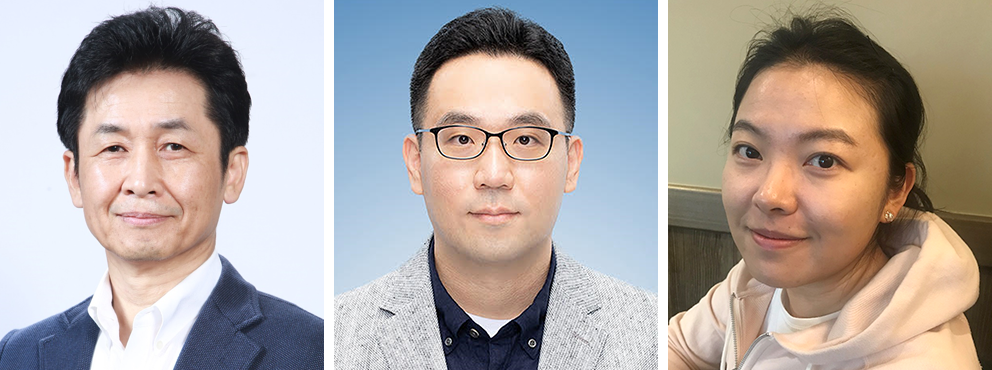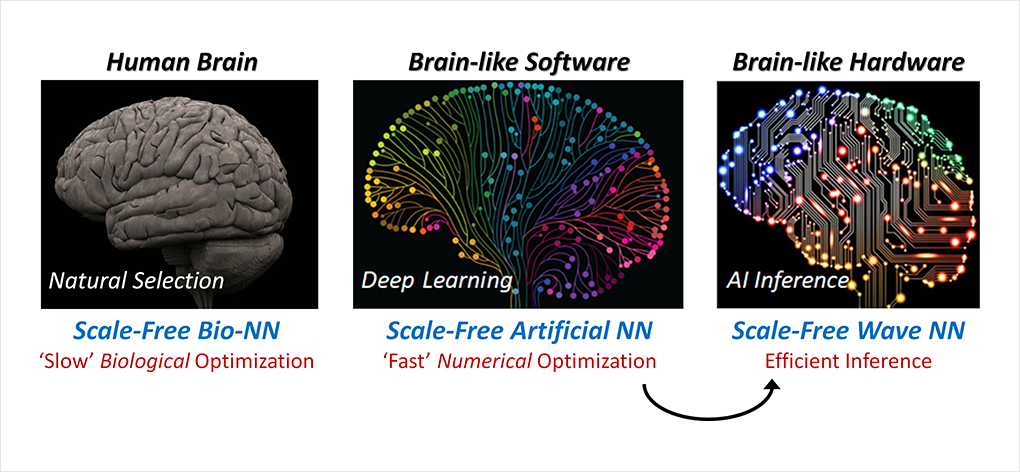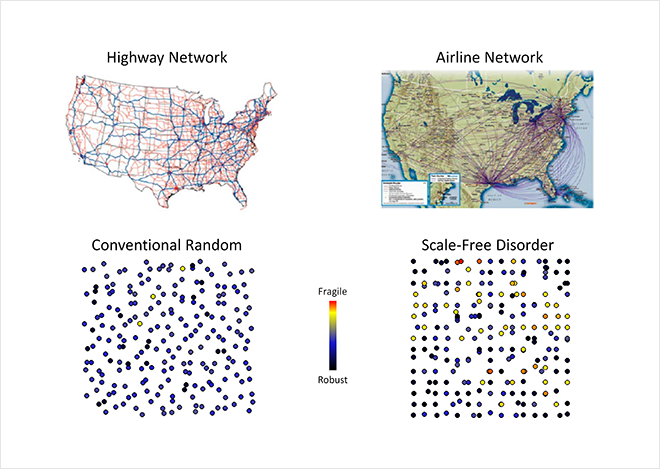Wave system realizes error robustness and efficient modulation as similar to a human brain
Designed platform provides a building block for future photonic artificial intelligence

From left, Professor Namkyoo Park, Professor Sunkyu Yu, and Doctor Xianji Piao (Dept. of Electrical and Computer Engineering, SNU)
Based on the global view on real-space complex networks treated in our recent review article, which was published in <Nature Reviews Materials> and the research about photonic neurons published last year in <Advanced Science>, I wish to achieve the development of light-operated artificial intelligence. Ultimately, the long-term goal is to present a new methodology for the design of high-speed, power-efficient artificial intelligence (Photonic Brain), which has recently been intensively developed by MIT, Stanford, and various startups, as well as to develop the Photonic Quantum Brain based on quantum waves.

Figure 1 Conceptual diagram of designing scale-free wave systems.
(Left) The human brain with the scale-free characteristics, which is the result of ‘slow biological evolution.’ (Middle) The deep learning artificial neural network that mimics the brain neural network in a software aspect. It also has characteristics of a scale-free network, which results from ‘fast numerical optimization.’ (Right) A scale-free wave system that is inversely engineered using neuromorphic software: deep-learning artificial neural networks. It can be applied to the realization of high-performance neuromorphic hardware mimicking a human brain.

Figure 2 Characteristics of a scale-free wave system.
(left, top) The road network has equal importance for each connection. (right, top) Meanwhile, the airline network has a few hub airports that are much more important in comparison to other airports, making the network stronger against accidental accidents. The hub airports govern the operation of the entire system, resulting in the fragility of the network to the intended attack. (left, down) A typical disordered system. Most particles have "equal" sensitivity. (right, down) A scale-free wave system with “unequal” atomic sensitivity. Certain particles are more sensitive to errors, defects, or modulations. In this case, the system is robust to accidental defects and is fragile to intended modulation. To summarize, the neural network of our brain has unequal structural characteristics, and the medium mimicking the brain is very suitable for signal processing and learning functionalities.


